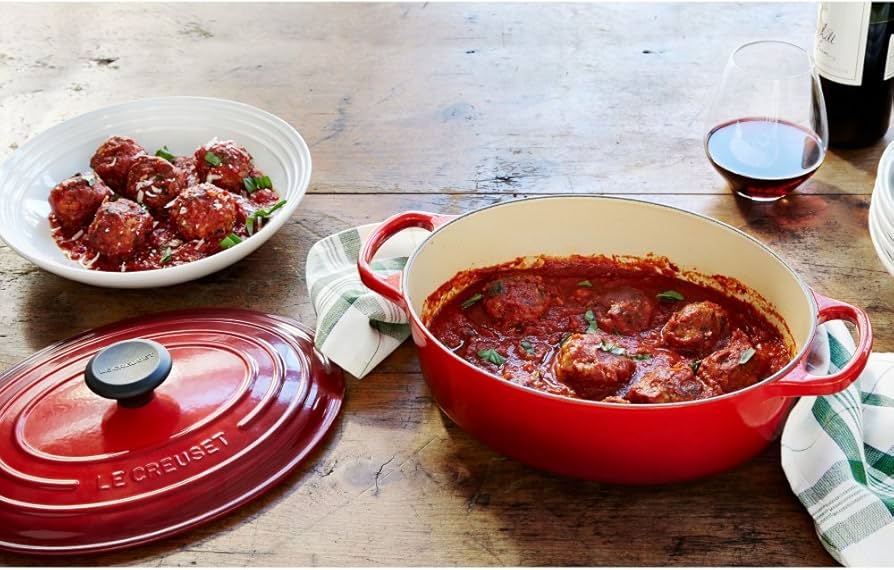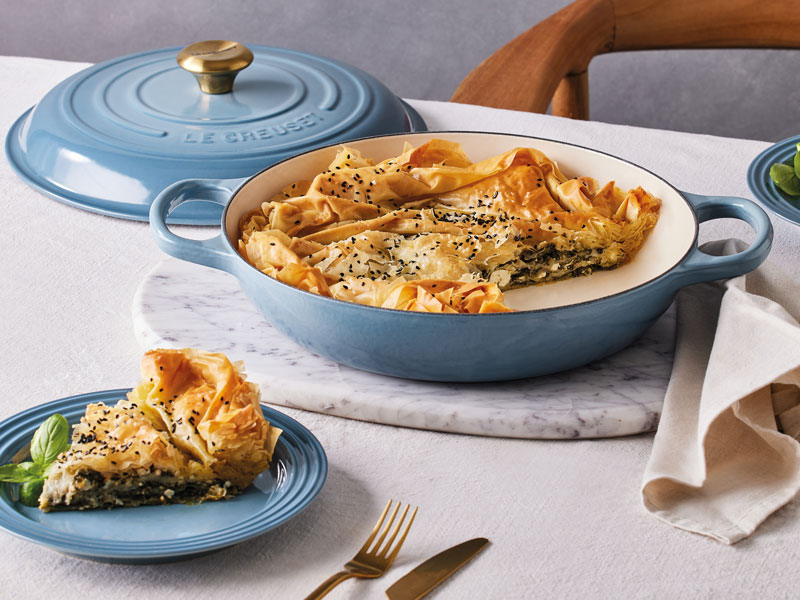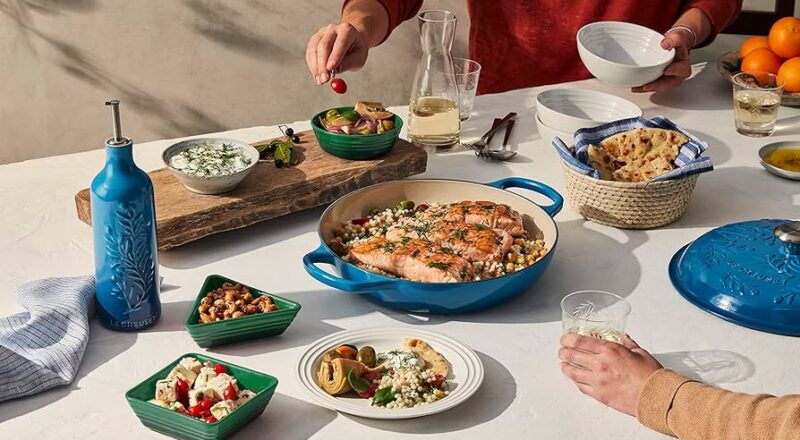The art of making soup is a cherished tradition in many kitchens around the world. Whether you’re simmering a hearty chicken noodle soup or a creamy tomato bisque, the vessel you choose can greatly affect the outcome. One of the most versatile and effective tools for this culinary task is the cast iron braiser. In this guide, we’ll explore how to make soup in a cast iron braiser, offering tips and insights to elevate your soup-making skills.

Why Choose a Cast Iron Braiser?
Before diving into the preparation methods, it’s essential to understand why a cast iron braiser is a fantastic choice for soup-making. These robust, heavy-duty pots are known for their exceptional heat retention and distribution. This quality ensures that your soup cooks evenly, with flavors melding beautifully over time. Additionally, the wide, shallow shape of a braiser makes it perfect for browning ingredients before simmering, enhancing the depth of flavor in your soup.
Essential Tools for Soup Making
1. Choosing the Right Ingredients
The foundation of any great soup lies in the quality of its ingredients. Fresh vegetables, high-quality meats, and homemade stocks are ideal for achieving a rich, flavorful soup.
2. Preparing Your Ingredients
Proper preparation is key. Chop your vegetables uniformly to ensure even cooking and season your meats well to build layers of flavor.
3. Using the Cast Iron Braiser
Preheat your cast iron braiser over medium heat before adding oil. This step prevents sticking and ensures that your ingredients brown evenly.
Steps to Making Soup in a Cast Iron Braiser
1. Building the Base
Start by sauting aromatics such as onions, garlic, and herbs in your preheated braiser. This step creates a flavorful base for your soup.
2. Browning the Protein
For soups with meat, brown the protein in batches to avoid overcrowding the pan. This technique locks in juices and flavor.
3. Adding Liquid
Once your base is ready, add the liquid. Whether it’s a rich homemade broth or a simple stock, the liquid will deglaze the pan and capture all the delicious browned bits.
4. Simmering to Perfection
Bring your soup to a gentle simmer. Cover the braiser partially with a lid, allowing steam to escape and flavors to concentrate.
5. Finishing Touches
As your soup nears completion, taste and adjust seasoning. Add fresh herbs or a splash of acid, such as lemon juice or vinegar, to brighten the flavors.
Tips for Perfect Soup Every Time
1. Layering Flavors
Building flavors layer by layer is crucial. Saut, deglaze, and simmer in stages for a complex, satisfying soup.
2. Controlling Temperature
Maintaining a consistent, gentle simmer is key. Avoid boiling, which can toughen meats and cause vegetables to break down.
3. Storage and Reheating
Soups often taste better the next day. Store leftovers in an airtight container and reheat gently on the stove to preserve textures and flavors.
Maintaining Your Cast Iron Braiser
Proper care ensures the longevity of your cast iron braiser. After each use, clean it with warm water and a brush, avoiding soap if possible. Dry thoroughly and apply a light coat of oil to prevent rust.
For more tips on maintaining your braiser, visit Prevent Rust on Cast Iron Braiser and Cast Iron Braiser vs Frying Pan.
Exploring Recipe Ideas
1. Classic Chicken Noodle Soup
A timeless favorite, chicken noodle soup is perfect for a cast iron braiser. The braiser’s wide base allows for even cooking of noodles and vegetables.
2. Creamy Tomato Basil Soup
This rich, flavorful soup benefits from the braiser’s ability to simmer gently, allowing flavors to meld beautifully.
3. Hearty Beef Stew
The robust heat retention of a cast iron braiser makes it ideal for slow-cooked beef stew, resulting in tender meat and rich flavors.

FAQ Section
1. Can I use a cast iron braiser for other types of cooking?
Yes, a cast iron braiser is versatile and can be used for baking, roasting, and even grilling. For more ideas, check Cooking with a Braiser vs Skillet.
2. How do I prevent my soup from sticking to the braiser?
Ensure the braiser is preheated well before adding ingredients and maintain a medium heat to prevent sticking.
3. What’s the best way to clean my cast iron braiser after making soup?
Clean your braiser with warm water and a brush. Avoid soap to maintain seasoning, and dry thoroughly to prevent rust.
For more detailed cleaning tips, visit Grill Indoors with Cast Iron Braiser.
This article contains affiliate links. We may earn a commission at no extra cost to you.

